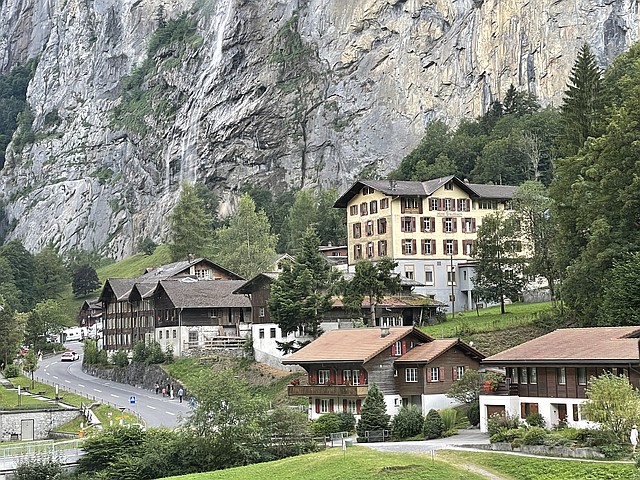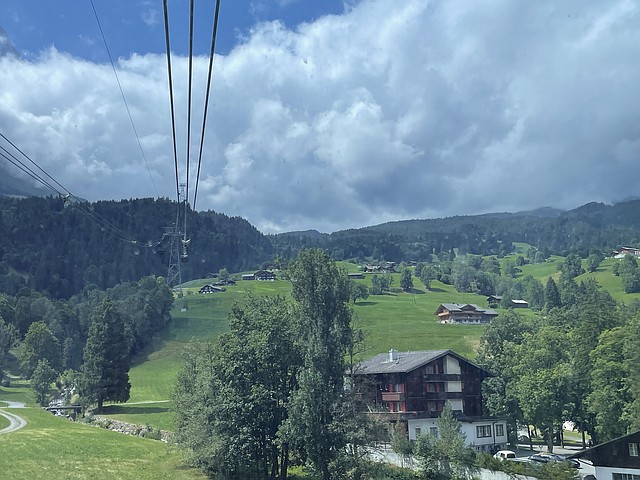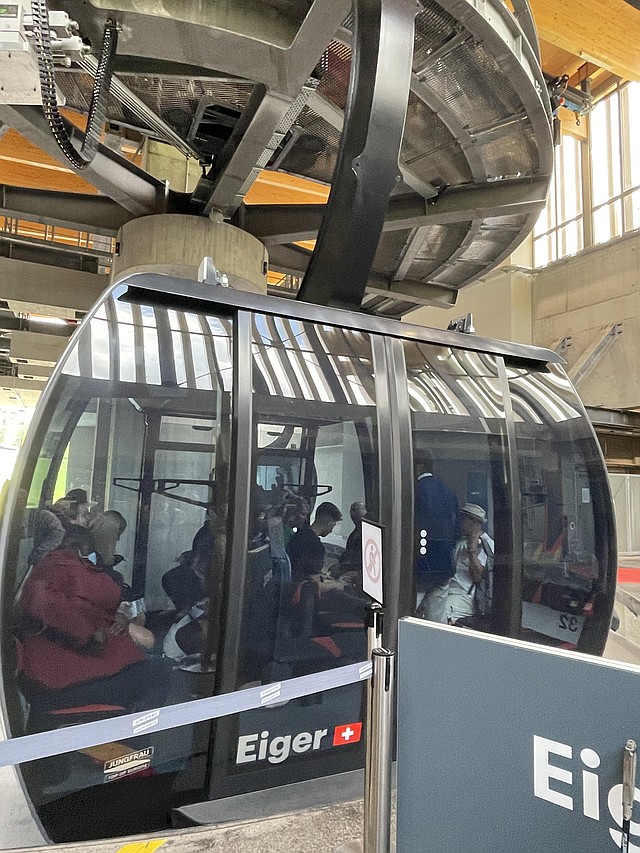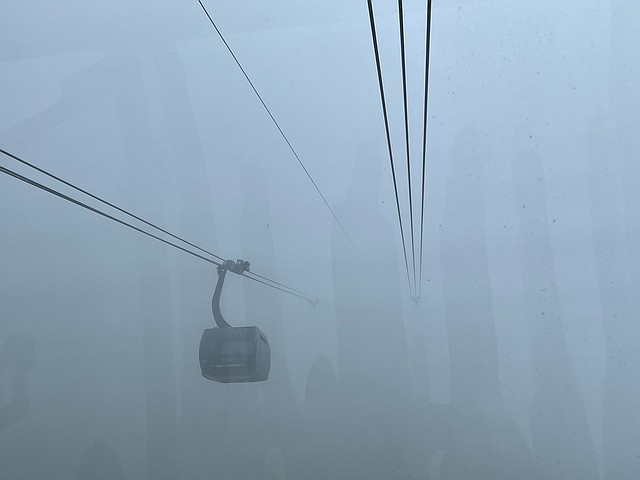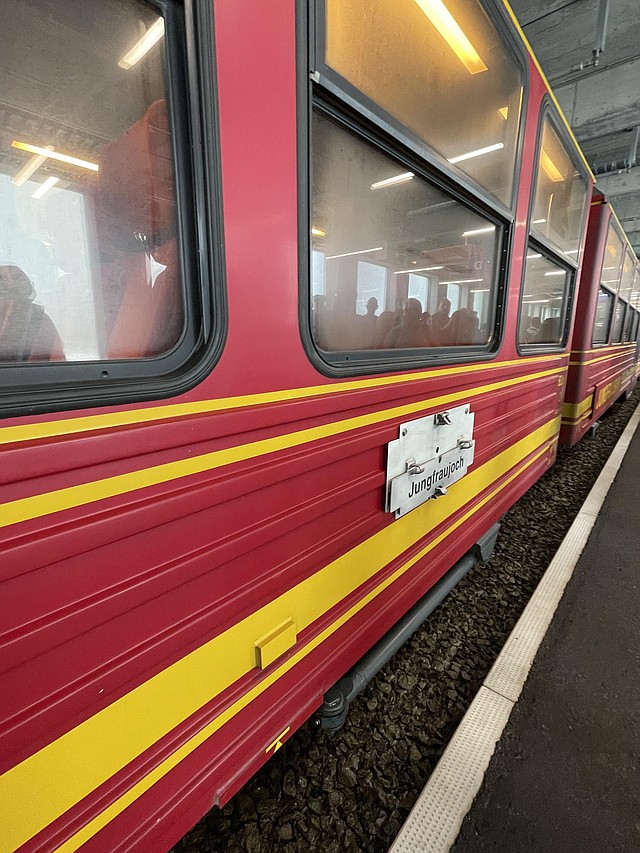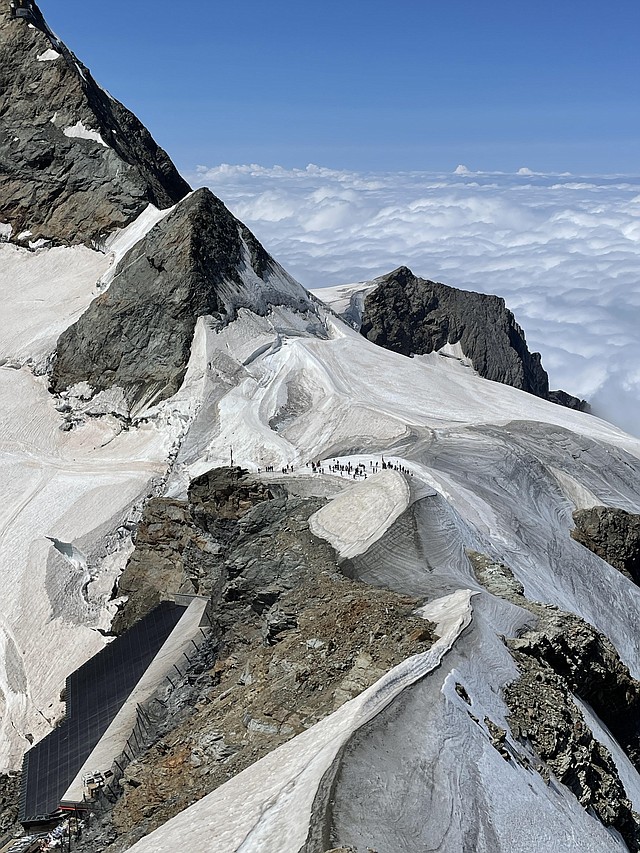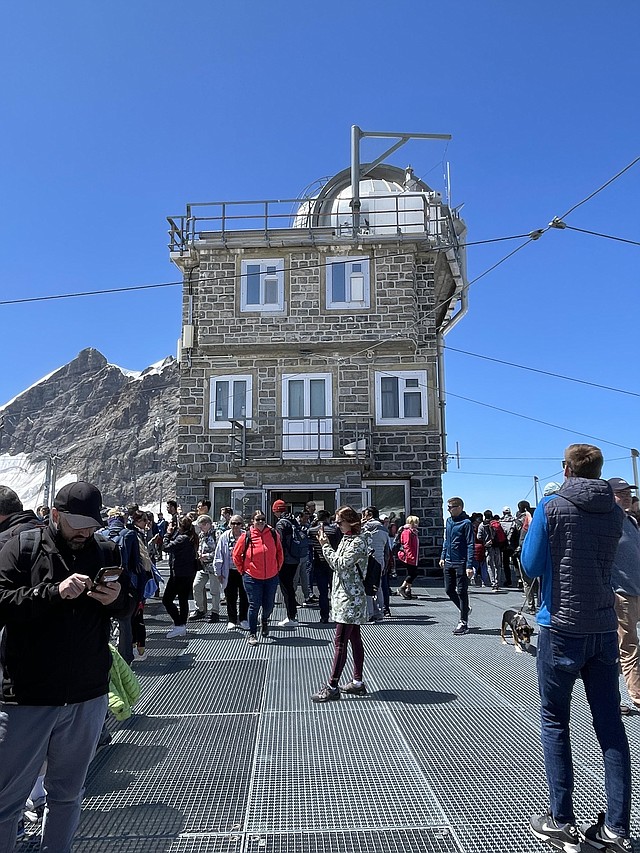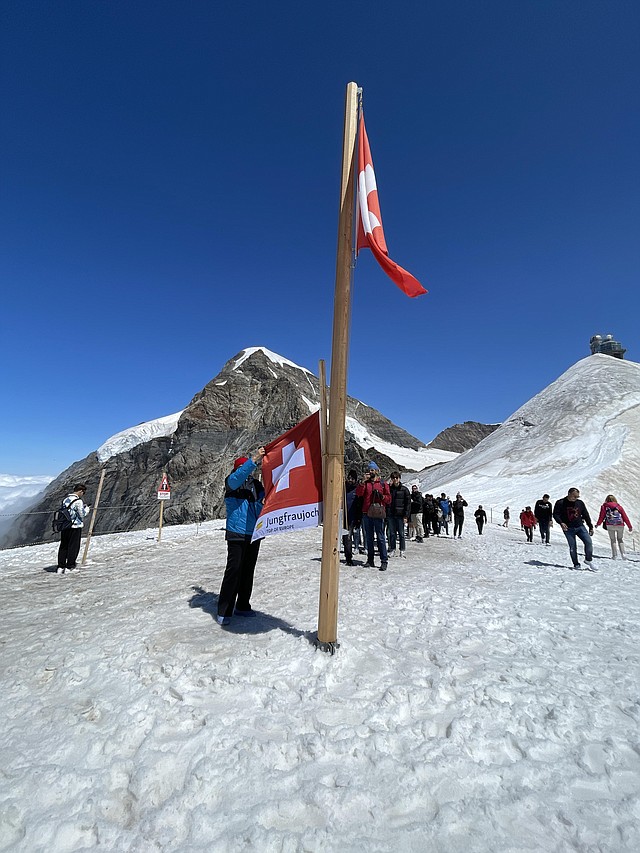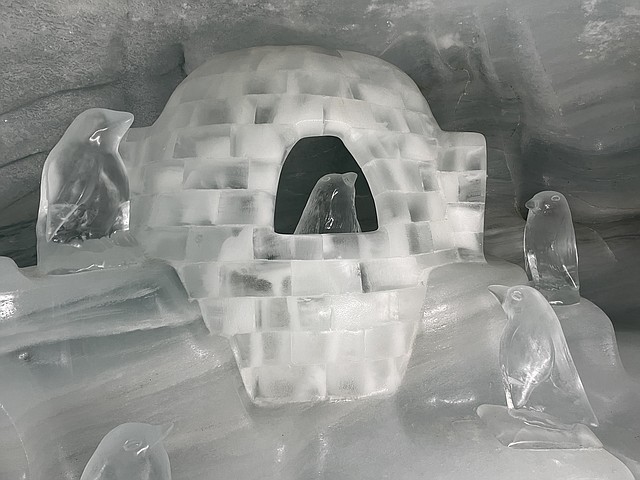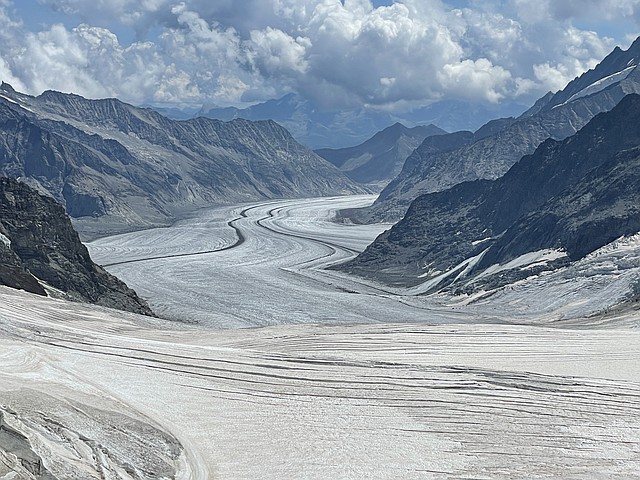Switzerland’s Jungfraujoch is a year-round wonderland of ice and snow
April 3, 2023 at 6:00 a.m.
It’s hard to decide what to see and do in this country of scenic wonders because the options are endless and can easily overwhelm you. Take comfort in knowing that you can’t go wrong no matter what you choose because natural splendor is everywhere.
Let your senses be your guide through this dramatic landscape. Drink in vistas of majestic peaks and sun-drenched valleys, listen to a gamelan concert of cowbells as you hike in the meadows, smell the fragrant wildflowers in bloom, sample cheeses and chocolates that will send you into ecstatic swoons and bask in the warmth of old-world Swiss hospitality in the charming, hand-hewn chalets and inns that dot the countryside.
One of Switzerland’s most unique adventures is a trip to Jungfraujoch, the “Top of Europe.” To get to this magnificent destination, you’ll first board the Eiger Express tri-cable gondola from Grindelwald to the Eigergletscher station. This system of transport just opened in 2021 and is a huge timesaver for day-trippers. The ride is an unforgettable experience in itself, as you’ll get to see the north face of the Eiger Mountain close up and have breathtaking views of the Alps all around – that is if the weather gods are favorable.
On my journey, the mountain was unfortunately socked in with fog and it was eerie and a bit unsettling not to be able to see anything in the whiteout conditions. I didn’t know it then, but thankfully clear, sunny skies awaited me at the Top of the World.
Once you reach the Eigergletscher station, you’ll then board the cogwheel train leading to Jungfraujoch – Top of Europe station – the highest mountain railway station in Europe at 11,333 feet. The cogwheel railway track, which involved digging a long tunnel through the rock of the Eiger and Mönch mountains, was completed in 1912 and took ten years to finish. It has been in continuous use since then.
The mighty Eiger Mountain is well-known to climbers. It’s famous for its 5,900-foot north face of rock and ice, which is the biggest north face in the Alps. The first ascent of the Eiger was made in 1858 by a pair of Swiss guides and an Irishman, who climbed the west flank. A successful ascent of the north face, however, didn’t occur until 1938 by an Austrian-German expedition. This route is considered amongst the most challenging and dangerous ascents and it has claimed the lives of at least 64 climbers over the years. Due to these tragic accidents, it has earned the German nickname, “Mordwand,” or “murder wall.”
When you take the cogwheel train you can enjoy views of the mountain from windows carved into the rock face. If you’re lucky, you might even get to see climbers in action.
At Jungfraujoch, there are a number of activities to experience. Take a fast elevator to ascend 354 feet in 25 seconds and arrive at the Sphinx Observation Deck and Aletsch Glacier. The Sphinx is one of the highest astronomical observatories in the world. Though the observatory is not open to the public, you’ll be able to step out onto the lookout terraces, which offer spectacular views across the Aletsch Glacier. It’s a sea of snow and ice, 13 plus miles long and over a half mile thick.
The Glacier Plateau is another highlight that provides visitors with vistas of both the Aletsch and Jungfrau Glaciers, along with the Jungfrau and Silberhorn Mountain peaks, from a vantage platform. A Swiss flag waves in the breeze as you take in this spectacular wintry world. Know these frozen conditions are guaranteed 365 days a year.
If you want to reach Mönchsjoch, Switzerland’s highest serviced mountain hut, make sure you have good hiking boots and a decent fitness level. The path from Jungfraujoch leads through the glacier and takes at least 45 minutes to an hour to reach the hut. And remember you’re at high altitude!
For more activity, head to the Snow Fun Park, where you can do winter sports in summer. Get your adrenaline rush on skis or snowboards, sleds or tubes, as you race down the slope.
And don’t miss the Ice Palace! Take a walk through this ice tunnel under the glacier with its vast cavern of niches and passageways containing crystal-like sculptures, such as eagles, penguins and bears. These shimmering works of art transform the grotto into a museum of sorts, albeit a very cold one! Interesting fact: Some parts of the Ice Palace move up to six inches per year.
Connecting the Sphinx Hall with the Ice Palace is the Alpine Sensation, a tribute to those who built the railway. It’s a multimedia trip back in time for a historical perspective of the place. And there’s also the Jungfrau Panorama film, which showcases a 360-degree panorama of the area.
You’ll find several restaurants and stores for your eating and shopping pleasure, including Lindt Chocolate Heaven. This unique chocolate experience is not only tasty but informative, as you’ll learn about the process of making Lindt chocolate starting from the cocoa bean. End your stay at Jungfraujoch on a sweet note!
Debbie Stone is an established travel writer and columnist, who crosses the globe in search of unique destinations and experiences to share with her readers and listeners. She’s an avid explorer who welcomes new opportunities to increase awareness and enthusiasm for places, culture, food, history, nature, outdoor adventure, wellness and more. Her travels have taken her to nearly 100 countries spanning all seven continents, and her stories appear in numerous print and digital publications.
